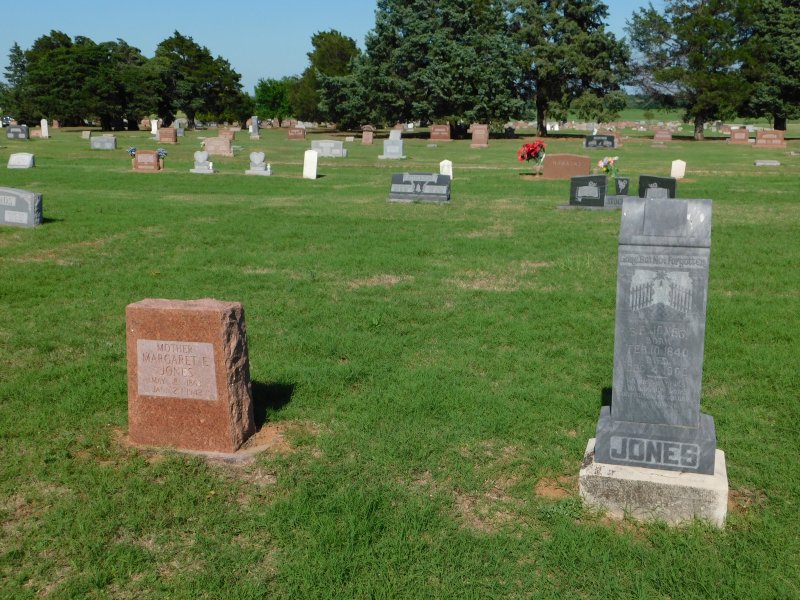The Hodge Family By Steven R. Butler, Ph.D.
The Hodge Family The HODGE Family I am a Hodge family descendant by virtue of the marriage of my great-grandfather, John W. Miles, to Margaret Elizabeth Hodge, daughter of James A. Hodge and his wife, Martha Jane Holder Hodge, of Franklin County, Tennessee. Presently, very little is known about this line. James A. Hodge was apparently a small farmer for who there are few public records. The following account is based on what few are available. JAMES AUSTIN HODGE
James Austin Hodge was born in Tennessee about 1820 and from all appearances spent all or most of his life in Franklin County. The names of his parents have apparently been lost to history. All we know is that they were both born in North Carolina. Miles Hodge, who settled in Franklin County, Tennessee in 1816 could have been James' father. Unfortunately, there is no further record of him in the county after January 18, 1816, when the State of Tennessee issued certificate no. 8461 entitling him to receive fifteen acres of land, on the Foul Lick Branch of Hurricane Creek, a tributary of the Elk River, as the assignee of a certificate originally issued to John Gray Blount in 1811. This transaction is recorded in two places: Tennessee General Land Grants, Roll 35, Book L, p. 884, and Mountain District Land Grants, Roll 157, Book 6, p. 287. A search of deed and census records has turned up no further record of Miles Hodge in Franklin County, Tennessee. What became of him is unknown. A man named William Hodge, who was issued state land certificate no. 5737 on June 19, 1814, for 100 acres on the East Fork of Swan Creek, a branch of the Elk River, in neighboring Lincoln County, could also be James' father. This transaction is recorded in Tennessee General Land Grants, Roll 35, Book H, p. 160. Unlike Miles Hodge, William Hodge, shown as "William C. Hodge," is found in the 1820 federal census, for Lincoln County. There were four males under in his household at this time, one of who could have been James A. Hodge. A William Hodge, possibly the same man, was living in neighboring Bedford County in 1830 and another William Hodge, or perhaps the same one, was living in adjacent Coffee County in the 1830s and 1840s. Any one of these men could have been James A. Hodge's father. Unfortunately, no evidence has yet come to light that links him to any of them. There was also a John Hodge, who claimed 100 acres of land in Franklin County in 1826, an Isaac Hodge or Hodges, who did likewise, and a Moses Hoge (probably a misspelling of Hodge)., who claimed 100 acres in 1827. Any one of these, as well as the William Hodge who died in Franklin County, Tennessee in 1836, could have been the father of James A. Hodge. Unfortunately, little is known about John, Isaac and Moses, apart from their land claims and census records, and likewise William Hodge, except that it was noted in County Court Minute Book, 1832-1845, p. 580, that an inventory of his estate was produced in court the year he presumably died. The inventory itself seems to have been lost to history. In Coffee County, Tennessee Court Minutes Books 1 and 2, men named Alexander Hodge, John Hodge, Patterson Hodge, Wiley, William Hodge, Senior and William Hodge, Junior are mentioned frequently. A C. W. L. Hodge is also mentioned. A James Hodge is mentioned but once, on page 167 in Book 1, as one of several men assigned to help build a road. This was in July 1838. Was he "our" James Hodge? Unfortunately, we don't know. Our first verifiable record of James A. Hodge in Franklin County, Tennessee comes from Circuit Court File No. 237, in which he is found to have sworn out a complaint against one Joseph Miller for an assault upon him that occurred on April 30, 1845, the same day as the complaint. The Sheriff of Franklin County was directed by the court to apprehend Miller. The following day, May 1, 1845, James A. Hodge "acknowledged himself to be indebted to the State of Tennessee in the sum of one hundred dollars," to be void if he appeared in court as witness against Joseph Miller. On May 6, 1845, he did appear in court as witness in the case of the State of Tennessee vs. Joseph Miller. Consequently, the Grand Jury indicted Joseph Miller for assault. Following a trial on this charge and a second trial on the same day for assault against a different person, Miller was fined, but the court ordered him to remain in jail until the fines were paid. How long that took is unknown. About four years later, on August 13, 1849, James A. Hodge was summoned to be in court at Winchester, as a witness for the prosecution of two men-Stephen Lewis and Henry Winker- who were charged with causing an "affray" During the U.S.-Mexican War of 1846 to 1848, a man named James A. Hodge served in Company I, Fifth Tennessee Infantry. Was this "our" James A. Hodge? The answer is "no." The James A. Hodge who served in this particular conflict from Tennessee can be found living in Missouri in 1860, where in 1888, his wife, Cynthia, applied for a Mexican War widow's pension. At some unknown date, probably in the late 1840s (a period for which county court records are missing), James A. Hodge was appointed a Constable. How long he held the office is unknow, but during the July 1855 term of the Franklin County court, he tendered his resignation, without explanation, and said that he hoped it would be accepted. Presumably, it was. This was recorded in the County Court Minutes Book for 1854-1857, page 178. Were the above-mentioned court cases connected to his job as constable? It's possible of course, even likely. The trouble is, we do not know when he was appointed, so there's no way to be sure. On February 1, 1847, Wilson Holder, one of the surviving sons of another of my ancestors, Solomon Langston Holder (died about 1847), sold his share in his father's estate to James A. Hodge for $50. Subsequently, James A. Hodge's name is found, along with the names of other heirs, in deeds of sale of some of the land that Solomon Holder possessed in Franklin County. Unfortunately, the extent of Solomon L. Holder's estate is uncertain. He died intestate and there are no extant probate records in Franklin County that provide any useful information. What portion of it passed to James A. Hodge is unknown. For some unknown reason, James A. Hodge was absent from Franklin County when the 1850 federal census was taken and he could not be found by the county sheriff, when directed to issue a summons to him, calling upon him to testify in a court case. Apparently, he was also not living in any other county in Tennessee, and if by some chance he was in California for the Gold Rush, he also evaded or avoided the census-taker there as well. A James A. Hodge of the same age was enumerated there, but he was born in Arkansas, not Tennessee.
We do know, however, that on March 24, 1853, in Franklin County, Tennessee, thirty-three-year-old James A. Hodge married twenty-three-year-old Martha Jane Holder, daughter of Ransom Holder and granddaughter of Solomon L. Holder. Together, over the next twenty years, they had the following named children:
Because James and Martha's first son was named William James Eli Hodge, I have conjectured that Lincoln County Sheriff Eli L. Hodge, who died in 1858, was possibly James A. Hodge's brother and that William Hodge, who died in Franklin County in 1836 was possibly their father. The 1860 federal census for Franklin County, Tennessee found the James A. Hodge family living near Winchester, the county seat. In addition to the three oldest children named above, there was also a ten-year-old Mary S. Hodge in the household. This girl is unlikely to be James and Martha's child because they were not married until 1853. It is known, however, that Sheriff Eli Hodge of Lincoln County had a daughter named Mary Susan Hodge. This must be her, and if it is, it constitutes further proof, however circumstantial it might be, that Eli Hodge and James A. Hodge were brothers. What appears to have happened is that Eli's widow could not afford to take care of all her children, so apparently some of them were farmed out to relatives. In this census, James A. Hodge's occupation is given as "Farmer," but there is no land value shown, only a personal property value of $200, which is a clear indication that he owned no slaves. This is also confirmed by the absence of his name on the 1860 slave schedule for Franklin County. In regard to James A. Hodge's occupation as "Farmer," the 1860 federal agricultural census is more informative. It shows that he owned twelve "improved" acres of land. There are no "unimproved" acres shown, so clearly twelve acres was the extent of his property. Its value was $180. His livestock consisted of one horse, two milch cows, two "working oxen," and one "other cattle." Total value: $185. The previous year, he had produced 200 bushels of Indian corn, ten bushels of potatoes, twenty bushels of sweet potatoes, 150 pounds of butter, and 15 gallons of molasses. The census also showed that he had produced $5 worth of unspecified "homemade manufactures" and slaughtered $35 worth of livestock for meat. It was not a particularly impressive record and it would be no exaggeration to say that the James A. Hodge family was "dirt poor" and very likely undernourished. We may guess that James also kept meat on the table by going out into the woods and hunting small mammals like squirrels, possums, raccoons, and rabbits, and perhaps deer as well, to help keep his growing family fed.
In November 1860 a case against James Hodge, brought by the State of Tennessee, was dismissed contingent upon him paying court costs. Unfortunately, this information, which can be found on page 233 of the Circuit Court Minutes Book for this period, does not include the nature of the charge against him. It appears, however, to have been only a minor offense of some kind. Unfortunately, we have no records that tell us how the Hodge family fared during the Civil War of 1861-1865. Nor do we know if James and his family sided with the Union or the Confederacy. James was too old (forty-one in 1861) to serve in either army. My guess is that they simply kept doing what they had been doing, i.e., trying to keep themselves fed, clothed, and housed, while doing their best to avoid any trouble from the warring parties that ranged across the state of Tennessee at this time. The 1870 federal census not only showed that the James A. Hodge family was growing in size, with eight children altogether. The census shows too that they were now living near the town of Decherd, about two-and-a-half miles northeast of Winchester, and that James' occupation is "Laborer," which indicates that he was most likely working for some other farmer. The fact that he was not listed in the 1870 agricultural census lends weight to this supposition. This census also reveals that James was now blind, which must have made it difficult for him to work to support his family. There is no way to know if James' blindness was the result of disease, accident, or if it was deliberately inflicted upon him in some way. Ten years later, when the 1880 federal census was taken, there were only five children at home: Maggie, Lewis, Josephus, Joel, and John. Sarah Jane was no longer at home because on July 11, 1871, she had married a young man named Isaac Cook and started a family of her own, making James and Martha grandparents for the first time, with the birth of baby Josephus Cook on November 7, 1871, only four months after his parents' marriage. Altogether, Sarah Jane would have eight children of her own. On February 3, 1874, Sarah's sister, Mary Jane Hodge, married a young man with the unlikely name of J. G. B. Fuchstocher, in neighboring Coffee County. Unfortunately, what became of Mary Jane and her husband after their marriage seems to be lost to history. You would think that someone with such an unusual name (for Tennessee) would be easy to trace, but he isn't. The 1880 census shows that although James was designated a "criple" [sic], he was still working as a farm laborer, as were his sons Josephus and Lewis. Perhaps his blindness was not total. Daughter Maggie was working as servant. That same year (1880), James A. Hodge was called as witness in a lawsuit, Curle vs. Helton. This is recorded in Franklin County Circuit Court File No. 488. On October 20, 1884, James and Martha's twenty-one-year-old daughter, Maggie, was married to John W. Miles, who had been married twice before, his first marriage ending with the death of his wife, and the second ending in divorce. On August 18, 1885, the couple's first and only son, Charles Wesley Miles, was born. Unfortunately, before the year was over, Maggie and her infant son would be abandoned when John W. Miles suddenly left town and went to Alabama, later Texas, with a young woman named Mary Alice Hefner, with who he had already had three children out of wedlock, one of which was born only a few weeks after his son, Charles. (For more about Maggie Hodge, see next section.) In October 1887, poverty-stricken James A. Hodge, deemed to be a "pauper," applied to Franklin County for financial assistance. He and his wife were granted $36 for the coming year, The following October, they were granted a further $9, to last until the end of 1888. These transactions are recorded in the County Court Minutes Books for this period, pages 114 and 386. The Circuit Court Book for this period, page 59, lists a case against James A. Hodge by the State of Tennessee, but gives no details or disposition. Owing to the fact that there is no further mention of James A. Hodge or his wife, Martha, in any known county or federal records after December 1888, and also the fact that they were both approaching the age of seventy, we may presume that they died sometime in 1889. Being paupers, they were probably buried in a "potter's field" in some Franklin County cemetery, at the expense of the county, although there seems to be no record of it. MARGARET ELIZABETH "MAGGIE" HODGE
Margaret Elizabeth "Maggie" Hodge, a daughter of James A. Hodge and his wife, Martha Holder Hodge, was born on May 8, 1863, right in the middle of the Civil War. She grew up on one or more small, hardscrabble farms in Franklin County, Tennessee, where her parents struggled to survive both war and poverty. On October 20, 1884, Maggie, married a man named John W. Miles, who had been married twice before, his first marriage ending with the death of his wife, and the second ending in divorce. At forty-one, he was twenty-years older than her. On August 18, 1885, the couple's first and only child, a son named Charles Wesley Miles, was born. Unfortunately, before the year was over, Maggie and her infant son would be abandoned when her husband suddenly left town and went to Alabama, later Texas, with a young woman named Mary Alice Hefner, with who he had already had three children out of wedlock, one of which was born only a few weeks after Charles. In 1890, Maggie began a relationship with a man named Seaborn Jones, also much older than her, who was married, but whose wife died in 1891. Maggie eventually married Seaborn Jones, on January 21, 1893, but not before she had given birth to two daughters, Daisy and Nettie, who were fathered by him. Their marriage took place after she had applied for and received a divorce from John W. Miles in 1892. The following is a list of their children together.
ABOVE: Margaret Hodge with her second husband, S.E. Jones and family. From left to right: Joe Wheeler Jones, Jennie Jones, S. E. Jones, Daisy Jones, Luna Jones, Nettie Jones, Maggie Hodge Miles Jones, Claiborne Jones, and Elizabeth Jones. This photo was taken in either Texas or Oklahoma. Courtesy Beverly Lumpkin. For reasons that are unclear, when the 1900 federal census for Franklin County, Tennessee was taken, Maggie's oldest child, Charles or "Charlie" as he apparently preferred to be called, was living with the family of Benjamin and Laura Farris Rhoton, as their adopted son, although there is no record of any formal adoption, rather than with the family of his mother and stepfather. It's uncertain what relationship, if any, the Rhotons had to Charlie. In all likelihood, they were only family friends. In either event, sometime not long after the 1900 census was taken, Maggie and her husband and children all moved to Dallas County, Texas, where on January 26, 1901, Maggie's husband, S. E. Jones, purchased from the firm of Bussey, Ayres & Gaston a 20-acre tract of land on the east bank of the Trinity, about a mile above Dowdy's Ferry, and an adjacent tract, containing slightly more than 13 acres, on the same side of the river, about eleven miles southeast of the Dallas County courthouse. Today, this property, through which Dowdy Ferry Road runs, and which still retains a rural "feel" and look, is a mix of modest one-story homes and businesses of various kinds. Around the same time, Charlie Miles also moved to Texas, apparently on his own, where he got married in Dallas in 1908 and then settled down to start a family in Richardson. Interestingly, Maggie's former husband and Charlie's father, John W. Miles and his new wife and family, were then living only a few miles away, in neighboring Collin County. Did any of them know that the others were nearby? Unfortunately, we just don't know. During the time the S. E. Jones family lived in Dallas County, Maggie gave birth to two of her daughters, Jennie and Luna, in 1901 and 1902 respectively. The family's stay in Texas was brief, however. For some reason that has been lost to history, sometime after Luna was born, they moved to Fort Cobb, Caddo County, Oklahoma, which then, as now, was a remote settlement on the flat, open expanse of the Great Plains, a place completely unlike their home in Tennessee, which was surrounded by green, verdant hills, nor did it resemble their small farm on the east bank of the Trinity River in Texas. Some would almost certainly call Fort Cobb a "Godforsaken Place." Perhaps that is why in the only photos we have of Maggie, she has such a dour, unhappy look on her face. They had only lived in Fort Cobb for about six or seven years when Maggie's husband, Seaborn, died on December 4, 1909. He was buried in the city cemetery on the northern outskirts of town. Unfortunately, the death of her husband put Maggie, who now had seven children to raise on her own, in a precarious position financially. From all appearances, her husband left her little or nothing substantial by way of inheritance. To earn a living, she became a washer woman, clearing other people's clothes, which was no doubt tedious work and not very well paid either.
Maggie's burden was no doubt lightened a little when on October 9, 1910, her daughter Daisy married a young man named Levi S. Lemmons and "left the nest," so to speak. On August 16, 1915, Maggie, just as her parents had done back in Tennessee, was forced by circumstances to apply to the county for financial help. Shortly afterward, because she had a minor school-age child at home (Joe Wheeler), she was granted $10 per month for "partial assistance." Unfortunately, in November, after it was learned that she was "neglecting to send her minor son to school, as required by law," the amount of her allowance was reduced to $5. On May 24, 1916, when it appeared that she was still not sending Joe Wheeler to school (or perhaps he was just playing hooky), the allowance was discontinued altogether. There is no record of it ever being restored. Sometime between 1915 and 1920, Maggie and her brood moved to Payne County, Oklahoma, where the federal census-taker of 1920 found them living in a rented house at 115 North Seay Street in the town of Cushing, a few miles north of Oklahoma City. By this time, only Wheeler, Luna, and Claiborne were still living at home. How Maggie was making a living for them at this time is unknown. Cushing was the same city where Daisy was then living with her husband and family.
In 1930, the federal census-taker found Maggie and son, Wheeler, living in a rented house at 316 East Oak Street in Cushing. By this time all the rest had married and left home. In 1931, Maggie's daughter, Daisy, died in Cushing. Sometime after, Maggie moved to Oklahoma City, where in 1934, she was living at 1219 N.W, 6th Street, apparently by herself. By 1939, she had moved to 106 S.W. 28th Street, where she and Luna lived together, after Luna got a divorce from her husband, Frank Walker, on September 11, 1939 in Muskogee. Maggie was still living with Luna, at 1003 First Street N.W., just a few blocks west of the central business district in downtown Oklahoma City, when she died on January 2, 1942 of a cerebral hemorrhage. She was 78-years-old. Following her death, Maggie was laid to rest beside her second husband, Seaborn E. Jones, in the Fort Cobb Cemetery.
The Hodge Family
This website copyright © 1996-2021 by Steven R. Butler, Ph.D. All rights reserved. |



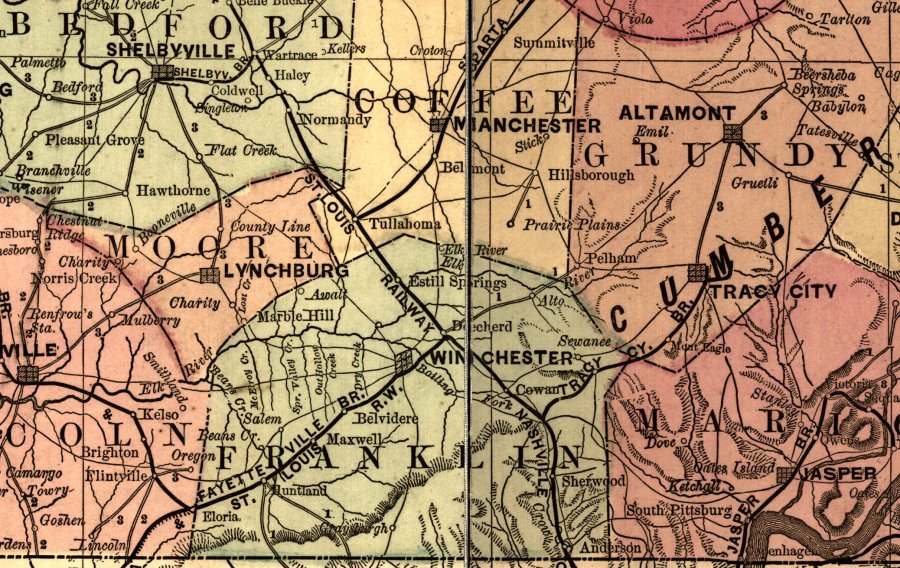
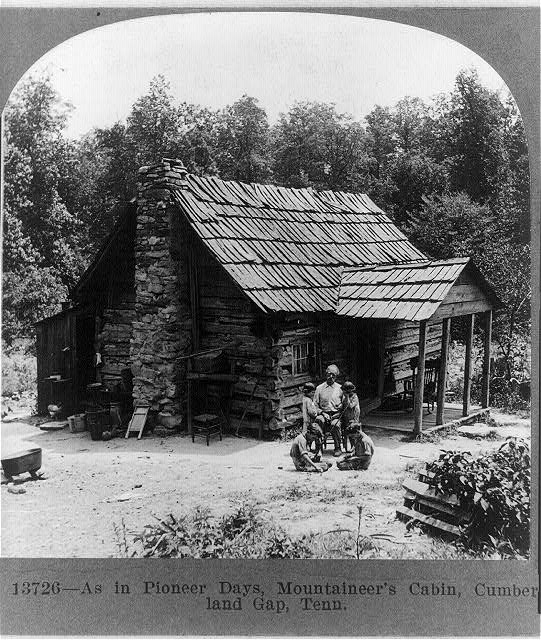
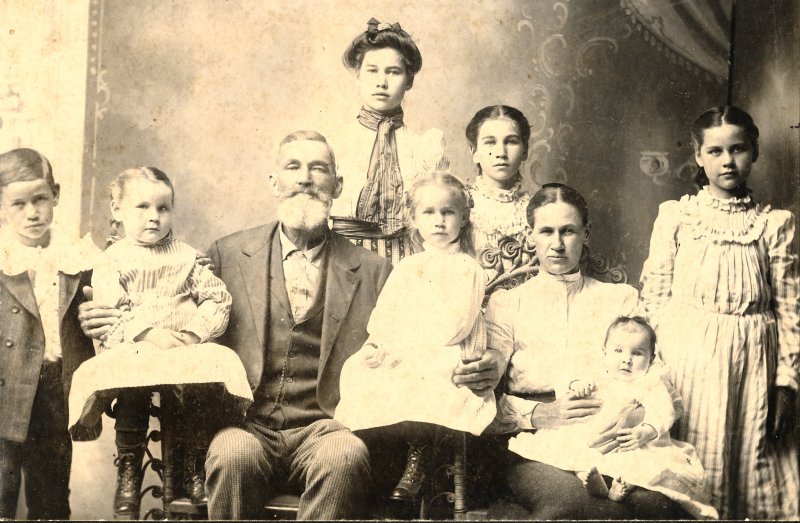
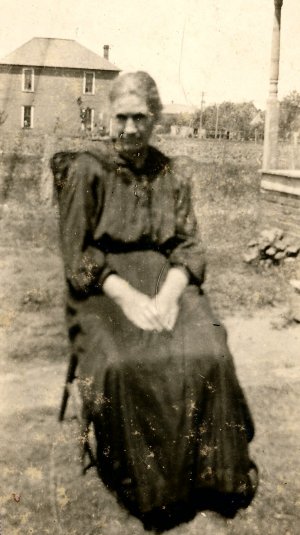
.jpg)
